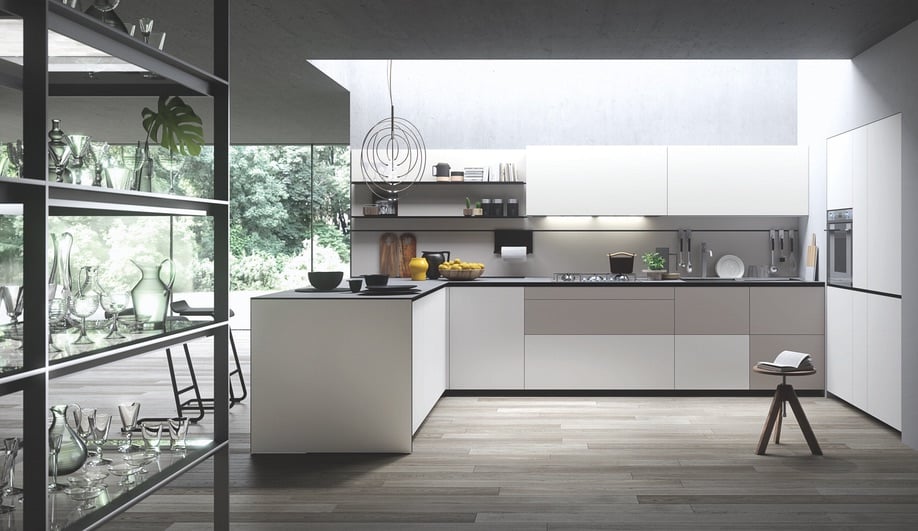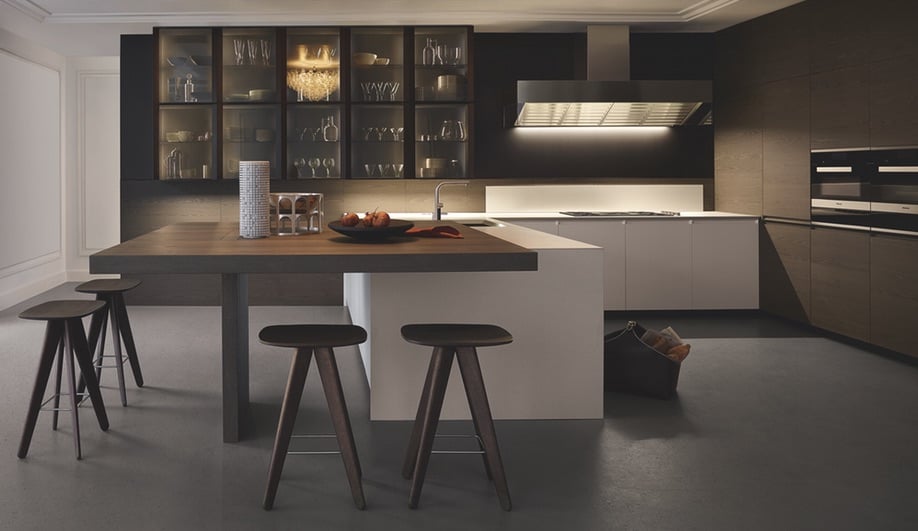


1 Forma Mentis by Valcucine
Versatile and adaptable, Forma Mentis keeps it sleek by doing away with handles, opting instead for cabinetry with beveled edges – seamlessly hidden along their edges, but open along the top. Designer Gabriele Centazzo developed the system to accommodate different thicknesses of brushed-marble countertop, different types of recessed grips and, of course, a variety of colour combinations.


2 Trail by Varenna
Developed with Carlo Colombo, Trail similarly integrates its handles into the edges of the glossy lacquered cabinet doors – in this case, along either a vertical or horizontal edge. Smoked glass inserts offer glimpses of what’s inside. The enlarged projecting counter surface encourages people to sit and enjoy a meal in the kitchen, turning the island into the social hub of the house – another trend found in many of the fair’s just-launched kitchens.


3 Alnoinox by Alno
Alnoinox, from German manufacturer Alno, stood out among this year’s crop for its material: apart from the countertops, which can be spec’ed in a variety of surfaces, the system is made entirely from steel. Hygienic and durable, the slim-lined front panels are offered in varying dimensions with a colourful powder-coat or metallic finish, and can even be outfitted with an ethanol-burning fireplace.


4 Soul by Ernestomeda
Giuseppe Bavuso’s Soul gets an update for 2016 with a matte-lacquered side-table module that can be enlarged to serve both kitchen and living spaces with the addition of sinks, cooktops, or storage. The units have a classic feel that makes for a welcoming, casual environment, ideal for those looking to blur the lines between kitchens and living spaces.


5 Lepic by Schiffini
Jasper Morrison “undesigned” Lepic – his first industrially produced kitchen – in three styles, inspired by three cities: Stockholm, Tokyo, and Milano (seen here). They share in common a seemingly straightforward blend of solid wood cabinets and open shelving and drawers, but with minor adjustments to often-overlooked details. Where they differ is in their colour choices: Tokyo features white cabinets and stainless steel back-splashes, Stockholm has cabinet paneled in warm Douglas fir ply, and Milano is styled in matte black.
